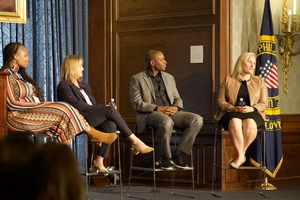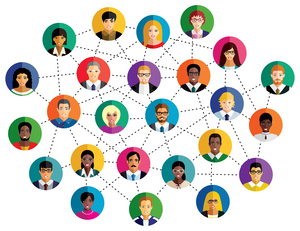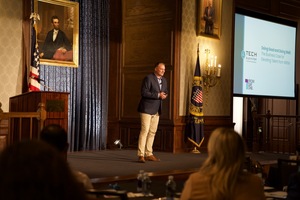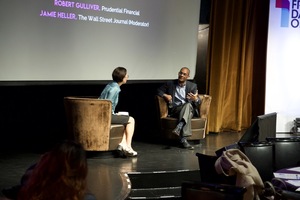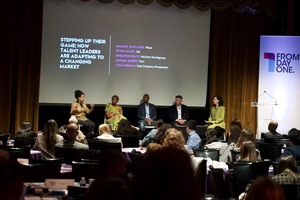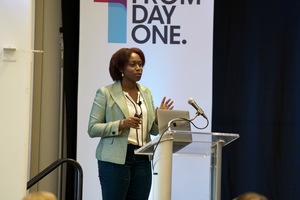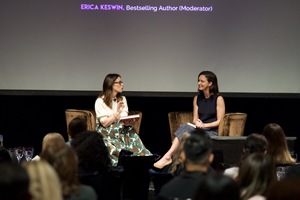Leading Across Generations: How to Build Openness and Trust
When Millennial Gloria met with her Baby Boomer supervisor Kenji over Zoom for a simple check-in, things went south fast. Each shared their weekend activities: Kenji did extra work, Gloria binged Netflix. While Kenji implied that Gloria’s choice of relaxing over working was lazy, Gloria was buried in her phone. When Kenji asked if he could see the first draft of Gloria’s report now, Gloria stated she would have it for him the day of the stated deadline, and he was not happy. Shortly after, Gloria asked about promotion opportunities. She desperately needs them in order to pay her bills. Kenji, who thinks Gloria is technically qualified for leadership, expressed concern that she doesn’t have the right attitude.This fictionalized workplace scenario came about through an improvisational exercise between professionals in a From Day One webinar titled, Leading Across Generations: How to Build Openness in Trust. The program was led by experts from IBIS Consulting Group, which for 30 years has been an internationally recognized leader in diversity, equity, and inclusion and change management. They believe that significant lasting change requires a dual focus on individual awareness and behaviors and on an organization's systems, and offer interactive training sessions, e-learning, assessments, and consultations.In the scenario of Gloria and Kenji, neither person was right or wrong, but both were held back in their ability to work effectively thanks to a breakdown in communication caused by wildly different styles and generational misunderstanding.The IBIS team offered key takeaways for how organizations can achieve equity and opportunity through the power of diversity and inclusion, build inclusive environments, and address systemic disparities for employees working across multiple generations.The Importance of a Multigenerational Workplace“The workforce has more generations working together now more than ever,” said Matthew Finkelstein, training associate at IBIS, with members of the Silent, Baby Boomer, Gen X, Millennial, and Gen Z generations now working side by side. Finkelstein shared a study from Deloitte showing the need for age inclusion in the workplace as well as a marked lack of preparedness among organizations to address this trend. “70% of national executives surveyed said leading multigenerational workplaces is important or very important for their success over the next 12 to 18 months,” Finkelstein said. “But only 10% say they are ready to address this trend.”Shilpa Pherwani, CEO of IBIS Consulting Group, led the webinar alongside colleagues and actors (company photo)Age is often overlooked in the conversation about diversity and inclusion, where racial and gender identities may take center stage. “Less than 50% of organizations actually include age diversity in their DEI initiatives,” said Shilpa Pherwani, principal and CEO at IBIS.Enin Rudel, senior consultant at IBIS, notes that among the four dimensions of diversity that impact one’s workplace personality – primary, secondary, organizational, and cultural – age and generational identity is within the primary sphere, having a trickle-down effect that impacts all the others.Age is imperative to consider when addressing workplace issues from an intersectional perspective. “The cross-section of our respective identities can often exasperate already challenging workplace conditions,” Rudel said. “Any of these identifiers could present as a challenge and or barrier to me with respect to securing an equitable workplace environment. But awareness of our respective intersectionality can also create an opportunity for establishing commonalities between us.”How to Bridge Intergenerational DifferencesEstablishing an environment with inclusive leadership is an important starting point for bridging intergenerational differences from the top down. “Inclusive leadership is defined as the intentional effort on behalf of leadership policies and practices to treat everyone respectfully and make sure their perspectives are valued,” Rudel said. “This results in the creation of a sense of belonging by acknowledging and celebrating the strengths that exist within our collective differences in multiple identities, which allows all teammates to thrive that work by bringing their full selves. This is a critical component of equity, in the sense that it provides everyone with the same access regardless of how one identifies or what groups they are a part of, and or not a part of.”For managers, this translates into a need for awareness around the ways in which generational differences can impact the employee experience. “Sometimes we attach stereotypes or have biases against groups of people for the way they exist in the workplace. It's not even always done with ill intent, but it's there. This can unintentionally create barriers to achieving inclusive leadership, because of the consequences this has on practices or policies within the workplace,” Rudel said. “Inclusive leadership across generations equates to focusing on our collective commonalities as a foundation for new policies and practices while honoring and acknowledging the uniqueness that we each bring to the table.”Best Practices for DialogueIBIS offers a ‘flex’ communication model, Rudel says, “creates an opportunity for reflection, both internally and externally as well as an opportunity for dialogue geared towards establishing a basis of shared understanding.” Managers are encouraged to do the following:Focus withinLearn from others Engage in dialogueExpand the optionsFollowing the flex model helps develop an inclusive leadership strategy. “As leaders, it is important to take into account what we may need to intentionally be doing as people managers, or as an organization to recognize differences, unintentionally address imbalances in order to provide access to the same opportunities for all,” Rudel said.Tools to Create and Build Trust and OpennessEach step of the flex model can be applied to creating better lines of communication within a multigenerational working community.Focus WithinEmployees are encouraged to recognize their own generational bias, stereotypes or misconceptions about the behavior, work ethic, or habits of people based on their generational identities, which can impact feelings of belonging among teammates. Combat generational bias through:Self-knowledge – Recognize that you may have generational bias.Self-awareness – Actively check yourself in meetings and ask questions rather than make assumptions.Authenticity – If a colleague reacts to a comment made about their identity, be receptive and shift the language.Learn from OthersConfirmation bias comes into play here, the tendency to search for, interpret, and recall information in a way that supports what we already believe, which can lead to groupthink within an organization. IBIS offers three strategies to mitigate this: Curiosity – Seek out different ideas and perspectives and stay open to new approaches.Cultural intelligence – Consider how different cultural norms may show up in the workplace. Humility – Openly receive feedback and work to modify behavior when needed.Engage In DialogueKeeping the lines of communication open can help reduce association bias, the hidden assumptions in which we associate people with certain categories, ultimately making some people feel that they don’t belong. Through dialogue, colleagues can break down barriers, build bonds, and reduce their natural assumptions through the following:Trust – When you are notified about a breach of trust, affirm how your colleague feels. Model this language for them. Transparency – Name any policies or practices that may affect the way a colleague shows up to do their best work without making any generation-based assumptions. Collaboration – Encourage different ways of thinking across your team and give them language for respectfully naming any discomfort. Expand the Options Finally, by expanding the options for inclusivity, a leader can develop allyship, in which they work to facilitate the development of and improve the experience of all people, in particular those who are underrepresented or from marginalized groups. Colleagues can become allies when they:Examine – Look at not only differences but also similarities among a multigenerational workforce. Explore – Discover ways to center these similarities to team cohesion. Experiment – Test out new ways of functioning as a team and see if it works.Building a Culture of Mutual Understanding and RespectUltimately, managers are best served by staying open-minded, self-aware, and mindful of the language they use to describe other employee’s experiences. And don’t make assumptions. “It's really important to understand that oftentimes, our perspective can extend far beyond the scope of our birth years,” Rudel said.For example, when Kenji in the opening example saw Gloria on her phone, he assumed she wasn’t paying attention to him when in fact, she was searching for the document he was actively asking her about. He should not have assumed, and she should have been more communicative, explaining why she was using her device in a one-on-one meeting. By noting what both of their generational biases might be in that scenario, each can bridge the communication gap in future interactions.And while awareness of differences is key to inclusion so, ultimately, is a celebration of similarities. Finkelstein shares that he and Rudel, despite being Zillennial (Millennial/Gen Z hybrid) and Gen X respectively, immediately bonded at work over a shared passion. “We both have a love for classic scary movies,” Finkelstein said. “It was great that that got to open the door into our working relationship. And it's been amazing so far.” By recognizing their shared humanity, workers of all ages can come together to build a more inclusive community.Editor’s note: From Day One thanks our partner, IBIS Consulting Group, for sponsoring this webinar.Katie Chambers is a freelance writer and award-winning communications executive with a lifelong commitment to supporting artists and advocating for inclusion. Her work has been seen in HuffPost, Honeysuckle Magazine, and several printed essay collections, among others, and she has appeared on Cheddar News, iWomanTV, and CBS New York.
Katie Chambers
|
October 30, 2023



